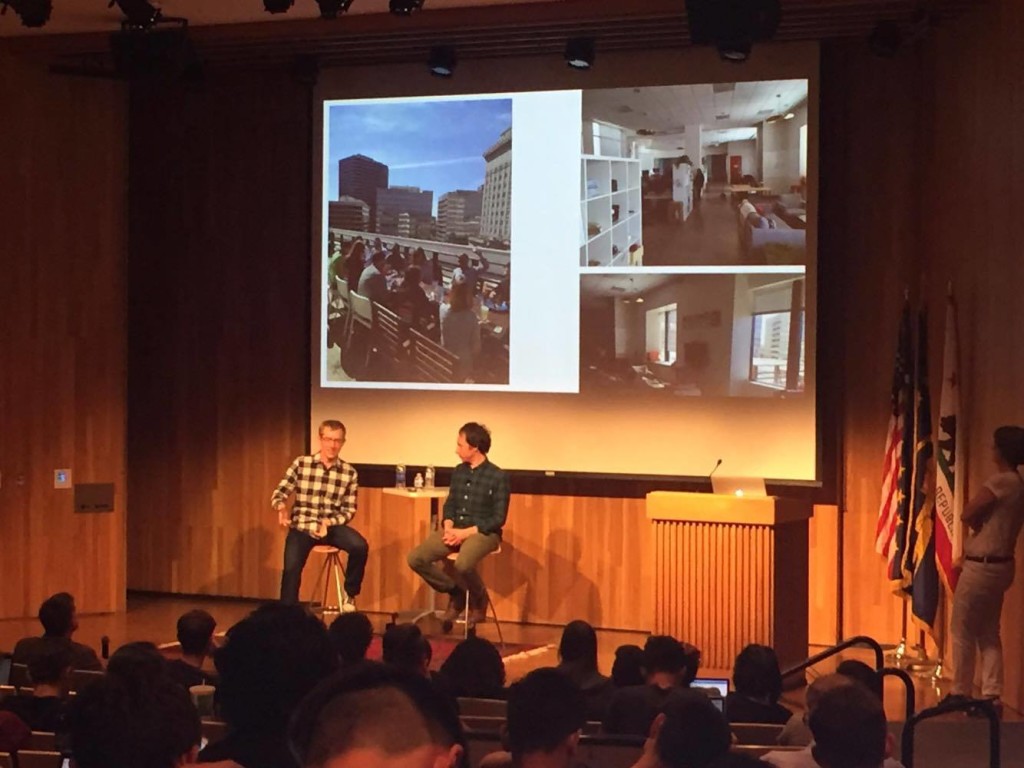
This week, the Newton Lecture Series featured two of Cal’s alumni and founders of Building Robotics, Andrew Krioukov and Stephen Dawson-Haggerty. Building Robotics is a startup based in the Bay Area that creates intelligent software systems for office buildings. The focus of the company is to use its products, such as Comfy, to ‘bring dynamic indoor environments to the mainstream’ – i.e. look for ways to improve energy usage and maximize occupant comfort, using smart robotic solutions.
It was captivating to hear about Andrew and Stephen’s journey – specifically because it defined exactly what university education at the SCET and Berkeley’s Engineering departments aims to create for students. Stephen, a Graduate Student Researcher worked on a number of projects at Berkeley between 2007 and 2014, including the creation of the TinyOS stack and an sMAP project which aimed to make it easy to collect energy related time-series data. Meanwhile, Andrew was also a PhD Researcher at UC Berkeley between 2008 and 2013. Their collaboration and the common desire to create an intersection between comfort and energy efficiency led to the idea of Comfy, Building Robotics’ prized product. Their doctoral projects shared a focus on software infrastructure for implementing building applications and data collection at scale.
Comfy is software installed in offices that connects to the existing HVAC systems. It responds to the needs of employees: they download an app on their phone, and at any time, whenever they are in the building, they can request hotter air, colder air, or say they’re feeling comfy. Comfy now supports over 3 million square feet of space in the United States and India, and as more people use the product, Building Robotics has watched managers’ perceptions shift.

The president of Building Robotics, Lindsay Baker, recently shared her opinion on this revolution. “A few years ago, it seemed like a cute idea to people, that you could give occupants an app and let them work out their temperatures themselves. They said, ‘You’ve got to be crazy. Giving people in the building the ability to change their own temperature is going to be chaos.’ The building industry didn’t believe it would save energy, because if you give everyone access to change the temperature, won’t they all just crank up the air conditioning in the summer? What really happens is that people are freezing in their offices in the summer. They’re not going to crank the air conditioning; they’re actually going to turn it down. We see it happen again and again,” says Lindsay.
More important however, is the idea that people can be connected to their environment via an app. “What Comfy has done – and I think this is really critical – is reconnect people to the systems around them. It’s reintroduced that relationship: that I have a building supporting me, I’m going to ask it to do something, and it’s going to respond,” she added.
Even Saturja Dai’s ventilation system uses Comfy as a product. Noted Domenico Caramagano, the facilities director of SDH, “Most buildings usually turn on their heat and air from 7:00am to 7:00pm, but the reality is that people come into the building at different times and have different preferences for the temperature in their office.”
“We feel that it’s important to help building managers improve their energy use, especially since 40 percent of the energy consumed in the U.S. is by commercial buildings,” said Krioukov. “In our initial test run at Sutardja Dai Hall, we found that using the software resulted in a 17% energy savings on the office side. By growing and expanding its use, we hope that this system can assist facilities to save energy and, as a result, money.” You can use Comfy from any web browser on floors 3-7 in Sutardja Dai Hall, by logging on to gocomfy.com and accessing the platform!
